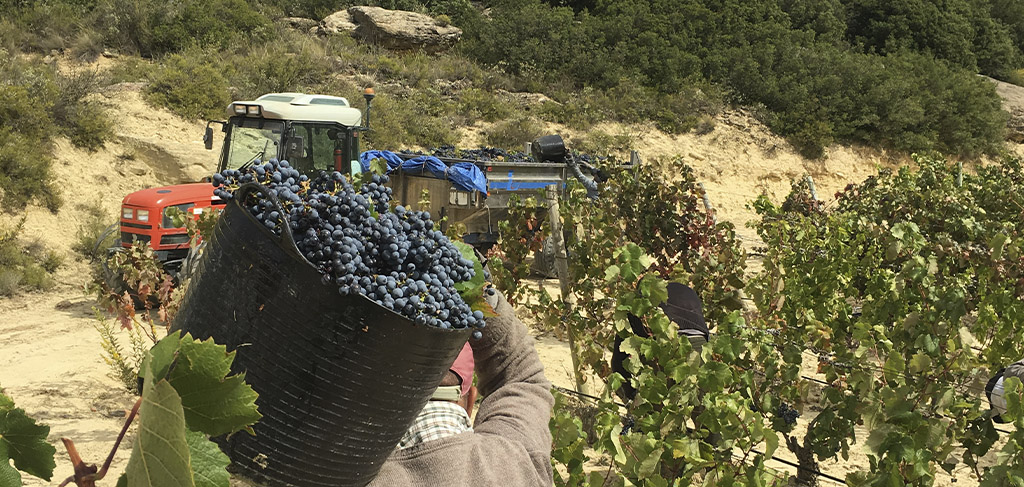
Last week we learned how the grape harvest was carried out until a few decades ago, and in today’s article we will focus on explaining how the grape harvest is carried out today in Rioja Alavesa.
That said, to begin with, it is worth noting that we could consider the moment when tractors began to be introduced into the life of the average farmer as a turning point in the evolution of the grape harvest. Although this vehicle has been around for more than 100 years, it was not until relatively recently that it began to be used in this region (around 1970-1980).
This vehicle brought great changes, from the adaptation of the vineyards, widening the space between the lines to allow the passage of the tractor, to the acquisition and planting of more vineyards, since now a single farmer could treat more land with the same hours.
In addition to this, transport from the vineyard to the winery began to be done in trailers, initially made of wood covered by a tarpaulin, and later in stainless steel, which can now easily carry more than 3,000 kg of grapes.
Along with this, the utensils or tools of the past are replaced by more modern ones, which will do the job in a more optimal way. The chestnut basket will be replaced by rubber baskets, which do not allow the must to escape, the corquete is replaced by the scissors, and, as we have seen in the previous paragraphs, the comportones and the cattle are replaced by tractors and trailers.
Finally, it is worth mentioning that changes are also made in the winemaking process, since in this case, it is currently common to pass the grapes through the destemmer as they arrive at the winery, in order to separate the stems from the grapes, and then take the grapes to the tank, where they will undergo alcoholic fermentation. In addition, nowadays we can make use of some yeasts to ensure that the fermentation will take place and thus preserve the quality of the grape in its entirety in our final wines. Once the fermentation is finished, we will obtain a single wine, unlike what was obtained in the past, and it will be up to the winemaker to decide whether to take it to crianza, reserva, young wine, or perhaps to sell it in bulk.
That said, here ends this introductory article to the history of wine, next week we will talk about sustainability, providing the example of our precious hut. If you enjoyed this article, we invite you to stop by our YouTube channel, where every Saturday we upload a video dealing with the same topic as here in greater depth. The video related to this article will be released this Saturday.
